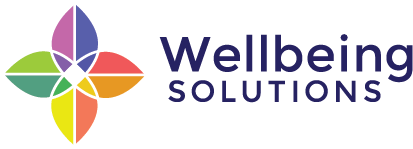Can Connection and Compassion Heal What Divides Us?
Reflecting on this past Thanksgiving holiday, I recalled being in the unusual situation of driving with my husband Dave, and without my kids to my sister’s house. It was the first Thanksgiving our children were away from us. They were off on a young adult adventure, and while I missed them not being with us, the five-hour car ride gave my husband and I some much needed time for conversation and connection. The drive from Morgantown, WV to Richmond, VA includes rural highways through the Appalachian Mountains, beautiful natural scenery speckled with small towns ranging from depressed towns with roadside shacks and trailers to quaint towns with horse farms and espresso cafes.
As we drove past vast expanses of scenic hilltops and streams approaching PawPaw, West Virginia, we wondered what it would be like to live in a place like this. The quietude and natural beauty appealed to us, but we were curious about the community, wondering if we’d find people ‘like us’ to meet. We’re keen mountain bikers, trail runners, and cross-country skiers and wondered, would we meet people with similar interests?
There’s not much in the heart of PawPaw, a couple of buildings that appear vacant and a gas station with a convenience store. We stopped at the gas station, and I went inside while Dave pumped gas. As I entered, I noticed four to five men, each sitting separately at small tables to my right, sipping coffee out of Styrofoam cups with vacant expressions on their faces. Taking in the whole picture of my surroundings, I felt an overwhelming sense of sadness that I couldn’t quite understand. I walked through to the restroom, feeling the pull of my heart and not sure what to do. I came out and struck up a conversation with the cashier, asking her if she planned to celebrate Thanksgiving after her shift was over. “No, I’ll be too tired, I don’t get off until 2 pm”, was her answer. I turned to leave, still feeling stirred up and a man sitting nearest the exit caught my eye. For a brief moment, our eyes locked, so I smiled at him and asked him how he was. “Lonely,” was his response and it stopped me in my tracks.
The man’s name was Lou, he was wearing camouflage, not particularly tidy, and sitting by himself. On my way in, the quick ‘story I made up in my head’ about the people I passed was that they were the faces of Appalachian poverty. They were here on Thanksgiving day because there was nowhere else for them to be. I don’t know what the other real stories were, but I came to know Lou’s. He had moved to PawPaw after retirement, attracted by the same things that my husband and I were noticing on our drive, vast expanses of land and natural beauty. He and his wife bought 7–8 acres and built their dream home. Lou made it himself — a 4,000 plus square foot home with a big porch on a hilltop. Then his wife became ill, struggled with her illness for several years and died. My husband joined our conversation, and we hung out with Lou at the convenience store for a bit. We asked him a question that caused him to turn and ask another man, also sitting by himself, the answer. This man joined the conversation for awhile.
We said our goodbyes and got back in the car. As we drove away, I couldn’t help feeling like something significant just occurred, and I wanted it to be more. I knew that Lou and I had connected, that I’d keep a fond remembrance of him in my heart and that I felt grateful. I wondered if he and the other guy continued to talk after we left, I hoped so. I reflected on how Dave and I had been wondering moments earlier if there would be ‘people like us’ if we lived here. Then, It occurred to me that maybe we don’t need ‘people like us’ for connection. Maybe we just need people.
I’ve been teaching yoga since 1994 and have been increasingly teaching about compassion and connection. It feels as is the world is crying out for this, and so I’ve been responding. But teaching students how to increase positivity resonance or practice loving kindness meditation in a yoga studio is a bit different than stepping into a convenience store gas station with guys in camouflage. What I’ve come to realize is that ‘people like us’ is everybody. That we’re more alike than we are different, and that ‘other than’ or ‘not like me’ is an illusion. When we look people in the eye, we see and acknowledge our shared humanity. When we inquire about their wellbeing and stop long enough to hear the answer, we recognize worthiness. Maybe that’s enough, or at least a step in the right direction to heal the divide that is palpable in our country and world right now. What would happen if we all took more time to see people as they are and weren’t so quick to categorize them as ‘other than,’ ‘not like me’ or ‘too different to bother getting to know’? I wonder if the simplicity of pausing long enough to look people in the eye and to ask how they’re doing, hearing their answer might suffice to start to bring us together.
If you’re reading this article, I hope you give it a try. On a country road, in a busy city, or even with people you encounter everyday. Pause, look them in the eye and see. Genuinely inquire about their wellbeing and stick around long enough to hear their answer. Maybe that’s enough, and if it isn’t, it’s at least something we can do to start to bridge the gap.
